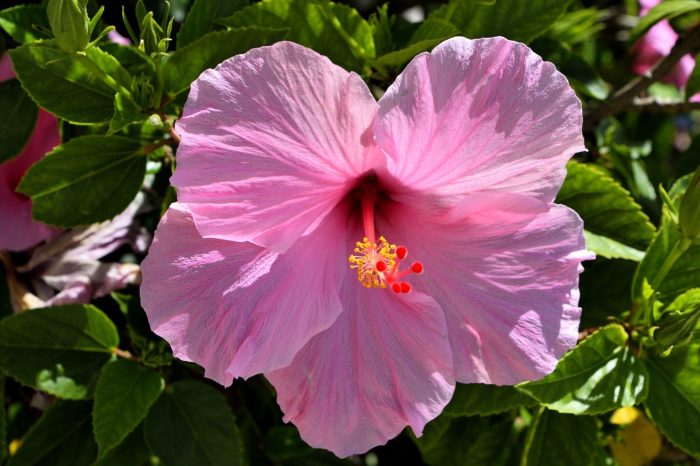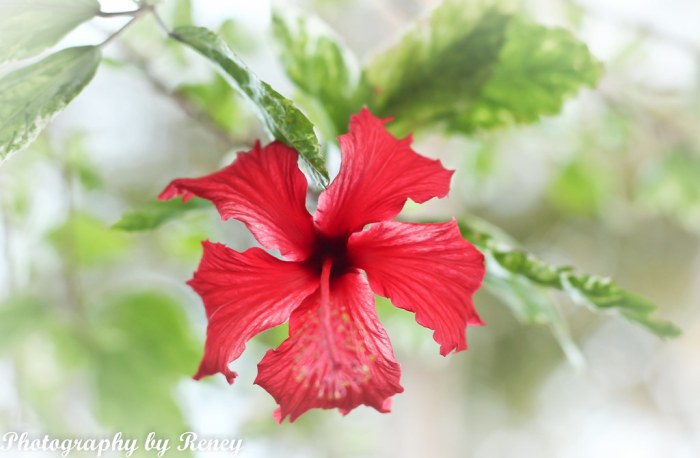My hibiscus won’t flower, and it’s driving me crazy! This tropical beauty is known for its vibrant blooms, but when they fail to appear, it can be frustrating. Join me as we delve into the environmental factors, plant health issues, and care practices that can influence hibiscus flowering.
Let’s get those blossoms blooming again!
In this comprehensive guide, we’ll explore the optimal conditions for hibiscus growth, identify common problems that can prevent flowering, and provide expert tips on how to troubleshoot and promote abundant blooms.
Environmental Factors

The flowering of hibiscus plants is heavily influenced by a range of environmental factors. Understanding and optimizing these factors can significantly enhance flowering performance.
Light
- Hibiscus plants require ample sunlight, preferably 6-8 hours per day.
- Insufficient light can result in stunted growth, weak stems, and reduced flowering.
Temperature
- Hibiscus thrives in warm temperatures between 65-85°F (18-29°C).
- Temperatures below 60°F (16°C) can inhibit flowering.
Humidity

- High humidity levels promote healthy growth and flowering in hibiscus plants.
- Dry air can cause bud drop and reduced flower production.
Soil Conditions
- Hibiscus prefers well-drained, fertile soil with a pH between 5.5 and 6.5.
- Heavy or poorly drained soil can lead to root rot and poor flowering.
Plant Health and Care: My Hibiscus Won’t Flower
Maintaining optimal plant health is crucial for promoting flowering in hibiscus plants.
Pests and Diseases
- Aphids, mealybugs, and spider mites are common pests that can damage hibiscus plants and hinder flowering.
- Diseases such as botrytis and powdery mildew can also affect hibiscus plants, reducing flower production.
Watering
- Water hibiscus plants regularly, especially during hot, dry weather.
- Overwatering can lead to root rot, while underwatering can stress the plant and inhibit flowering.
Fertilizing
- Fertilize hibiscus plants monthly during the growing season with a balanced fertilizer.
- Avoid over-fertilizing, as this can damage the plant and reduce flowering.
Pruning, My hibiscus won’t flower
- Pruning hibiscus plants regularly encourages new growth and promotes flowering.
- Remove dead or diseased branches, and shape the plant to promote air circulation and sunlight penetration.
Variety and Age
Different varieties of hibiscus have varying flowering habits and bloom times.
Variety
- Hardy hibiscus ( Hibiscus moscheutos) blooms from mid to late summer.
- Tropical hibiscus ( Hibiscus rosa-sinensis) blooms year-round in warm climates.
Age
- Hibiscus plants typically reach maturity and begin flowering within 2-3 years of planting.
- Older plants may experience a decline in flowering due to natural aging.
Pruning and Training
Proper pruning and training techniques can enhance flowering in hibiscus plants.
Pruning, My hibiscus won’t flower
- Prune hibiscus plants in late winter or early spring before new growth begins.
- Remove dead or diseased branches, and cut back overgrown stems to encourage branching and flowering.
Training

- Hibiscus plants can be trained to grow in specific shapes or forms.
- Use stakes or trellises to support the plant and encourage upright growth.
Dormancy and Rest Periods
Hibiscus plants benefit from a period of dormancy and rest to promote flowering in subsequent seasons.
Dormancy
- In cooler climates, hibiscus plants enter a period of dormancy during the winter months.
- During dormancy, the plant loses its leaves and goes into a state of reduced activity.
Rest Periods
- Even in warm climates, hibiscus plants can benefit from a rest period.
- Reduce watering and fertilization during the winter months to allow the plant to rest and prepare for the next growing season.
Troubleshooting Common Problems
If your hibiscus plant is not flowering, there may be underlying issues that need to be addressed.
| Problem | Possible Causes | Solutions |
|---|---|---|
| No Flowers | Insufficient light, low temperature, pests, nutrient deficiency, overwatering | Provide more light, adjust temperature, treat pests, fertilize, adjust watering schedule |
| Bud Drop | Dry air, overwatering, nutrient deficiency, pests | Increase humidity, adjust watering schedule, fertilize, treat pests |
| Stunted Growth | Insufficient light, low temperature, nutrient deficiency, pests | Provide more light, adjust temperature, fertilize, treat pests |
General Inquiries
Why are the leaves on my hibiscus turning yellow?
Yellowing leaves can indicate nutrient deficiencies, particularly nitrogen or iron. Ensure your hibiscus is getting a balanced fertilizer and check the soil pH to ensure it’s within the optimal range (5.5-6.5).
My hibiscus has pests. How do I get rid of them?
Common pests of hibiscus include aphids, mealybugs, and spider mites. Use insecticidal soap or neem oil to control infestations. For severe infestations, consult a garden center for stronger pest control options.
How often should I water my hibiscus?
Water your hibiscus deeply and regularly, especially during hot, dry weather. Allow the top inch of soil to dry out between waterings to prevent overwatering.
